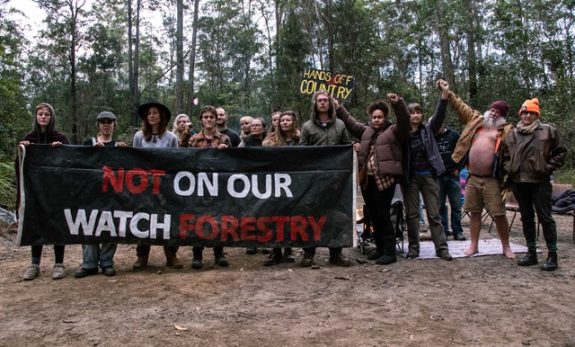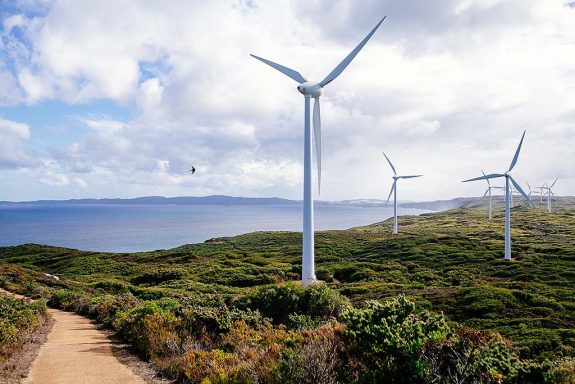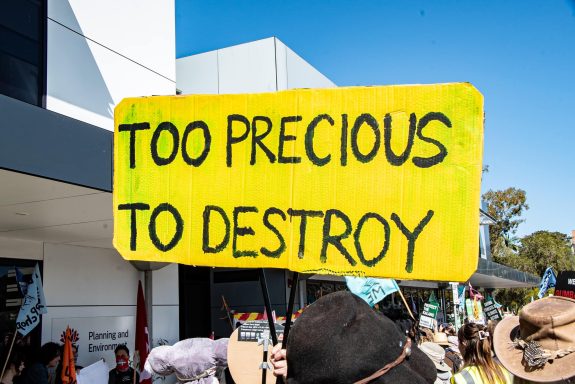By Frances Goold
“The virtue of a plant is in its seed; its form is implicit in its first shoot. We can learn more of the essential nature of art from its earlier manifestations in primitive man (and in children) than from its intellectual elaboration in great periods of culture. For in its later stages art is overlaid by modes of life and manners that are not of its essence.” (Herbert Read, Art Now, 1933).
PLATFORM 1
In NSW, students over the course of years 7 and 8 must study visual art in high school, then choose it as an elective subject in years 9 and 10. During a time of fast food, fast fashion, fast connection, fast roads, and slow money the NSW Education Standards Authority (NESA) is planning to streamline the arts curriculum for Years 7 to 10 high school students.
According to a recent SMH article, a new draft syllabus released for consultation last month has not been well-received by art teachers who say teaching will become more difficult without the clarity already provided by current syllabus guidelines. NESA says it welcomes feedback, and it looks like this will be forthcoming.
In a letter to the membership, the Visual Arts and Design Educators Association of NSW (VADEA) is asking for submissions to NESA by September 11. Among a list of objections and recommendations, it has criticised the proposed syllabus as lacking in clarity about what students are required to learn, stating that it “represents an erosion of the quality, depth and academic rigour that has been fostered through our current visual arts 7-10 syllabus, over the last 20 years”.
Though conceding some reforms were needed, it seems teachers are unhappy about the draft’s reductionist “streamlining and decluttering” approach which, they say, removes core content from visual arts courses that amounts to “ripping the guts out of it”. It is apparently proposed to remove postmodernism as a “conceptual lens through which students consider artwork, while practical activities in the course such as painting have been relegated to a footnote.” No longer will students be required to study drawing, ceramics, oil painting and sculpture (and 2D, 3D and 4D artworks), which, according to visual arts teachers, have been “relegated to a footnote.”
Criticised also in the association’s letter to its members (though not mentioned in the SMH article) is the timing of the draft syllabus “in the middle of the HSC Visual Arts Body of Work (which) has significantly impacted engagement from the broader visual arts community.” This suggests that consultation by NESA was perhaps not quite as broad as claimed, commensurate with the pragmatic policy style of the previous incumbents who initiated a “once in a generation” review of the NSW curriculum in 2020 calling for all subjects to be leaner in content in a bid to foster a more in-depth understanding of essential concepts in a decluttering process to give teachers more flexibility.
Storm in a teacup or no, judging by standard of this year’s ARTEXPRESS, it’s difficult to fathom any need for improvement.
PLATFORM 2
In its 40th anniversary year, 266 student works were selected from the 2022 HSC cohort of 8028 submissions for ARTEXPRESS – an annual exhibition of works, from which a smaller selection is first exhibited at the Art Gallery of NSW, and smaller cohorts are selected for exhibition by the curators of various metropolitan and regional museums and galleries throughout the year.
I was fortunate to catch an ARTEXPRESS exhibition at the Blue Mountains Cultural Centre (BMCC) before it closed in August.
If the 43 art works I viewed are any indication of the rest of the cohort, this year’s edition is surely a testimonial to the existing syllabus. The BMCC exhibition perfectly demonstrated – at least from a layperson’s point of view – that if any ‘decluttering’ to the visual arts syllabus is required, it has nothing to do with how this exhibition came into being.
It was a wonderful show. Particularly striking was the variety and appropriateness of media chosen by these students to realise the depth of their ideas, which were expressed through several highly emotive and evocative ‘bodies of work’ deploying traditional art forms and techniques. Subjective experience was expressed in direct ways alongside more ‘detached’ perspectives and philosophical/social observations often best suited to electronic and other contemporary media (digital media, 4D formats, postmodern ‘appropriation’, and so on).
One might assume that a selection process consisting of so many examination and selection rounds would reduce to chance any thematic unity across artworks, yet at times the emotional correspondence between the works impressed as a collective response to a shared experience.
ARTEXPRESS could not be more remote from a collective effort in the usual sense, with ‘bodies of work’ produced by individual students during years of tuition, trial and effort, then selected from hundreds of schools across the state for public viewing following a wearying process of examination, competition and curatorial selection. Yet an impression of aesthetic unity across the exhibits derives from a pervasive sense of a story needing to be told. This is not suggested by narrative sequences – of which there are several examples – but by the quiet articulation of individual ideas and feelings through chosen media from the traditional to contemporary digital praxis. Thus the show’s powerful life-force was oddly of a piece, as if it were a group exhibition united in common purpose, which indeed it was; these kids had been through covid.
*****

Lexi Stephenson, Introspection, painting, 2022
In addition to the range of traditional and contemporary media – rendering visions of place, landscape, origins, migration, identity, gender, consumerist culture, the strength and depth of family ties and bonds – a significant number of artworks reveals the physical and emotional impact of a global pandemic encountered by young people at a critical and vulnerable crossroads in life.
Lexi Stephenson’s painting, to give one example, demonstrates an artistic sensibility within which her suffering has been contained and communicated by means of a considerable degree of mastery over her chosen medium. Her painting achieves more than depiction; painterly qualities express a literal struggle, twisted sheets eventually transmogrifying into paint-loaded brushes. The result is expressionist and powerful that could not have come into existence without all that has gone before, in art history and in her art education to this point.

 Spectres of catastrophe have veered close to disrupting the sanguineness that should be the brief heritage of a younger generation, whose talents and intellects must grapple instead with processes of adjustment and adaptation and, for some most poignantly, the social isolation and estrangement inflicted by a killer pandemic. The tragedy for this generation and those immediately prior, is that the natural world is no longer capable of inspiring the awe and overwhelming urge to develop new means to capture it that gave rise to the almost pantheistic plein air art of the English Romantics, French Impressionists, and so on. The landscape genre is being replaced by a distal, digital reportage symptomatic of adaptive fatigue. Yet here, as if driven by fortuitous unity of purpose, the gamut of traditional and modernist forms seem to have been chosen for their communicative and expressive immediacy. These works at least – if one can generalise across their individualism – are finely crafted attempts to transform thoughts and feelings into unflinching accounts of where they precipitously find themselves and how they feel about it.
Spectres of catastrophe have veered close to disrupting the sanguineness that should be the brief heritage of a younger generation, whose talents and intellects must grapple instead with processes of adjustment and adaptation and, for some most poignantly, the social isolation and estrangement inflicted by a killer pandemic. The tragedy for this generation and those immediately prior, is that the natural world is no longer capable of inspiring the awe and overwhelming urge to develop new means to capture it that gave rise to the almost pantheistic plein air art of the English Romantics, French Impressionists, and so on. The landscape genre is being replaced by a distal, digital reportage symptomatic of adaptive fatigue. Yet here, as if driven by fortuitous unity of purpose, the gamut of traditional and modernist forms seem to have been chosen for their communicative and expressive immediacy. These works at least – if one can generalise across their individualism – are finely crafted attempts to transform thoughts and feelings into unflinching accounts of where they precipitously find themselves and how they feel about it.

Ella Fenton-Smith, High Country Scars, print (detail), 2022
Themes of threat, loss and alienation – environmental, social, personal – permeate these works and suffuse them with insistent persuasiveness. Yet notwithstanding its dystopian quality, there is also grace and lyricism expressed through a multiplicity of traditional media, where disheartening prospects are being emotionally processed and articulated.
Demonstrated also is a robust capacity for contemplation on difficult realities with the kind of maturity and technical assurance that even a terrible fact can be writ large on close inspection yet retreat to the safety of abstraction with distance.
Generalisations do not do justice to the originality and formal sophistication of so many works that demonstrate a disciplined harnessing of technique to a concept, an idea, an atmosphere, an escapist or nostalgic dream sufficiently to render it in a form that can be read off, even entered into as one might in the reading of a novel, or watching a film, or even playing a video game.

Joye Fu, Occhiolism, Drawing/Graphics Tablet , 2022
Here Jim Dawes refrains from dictating every step of a journey via time-based media; instead he plays with dimension and perspective to unify several visions in a single moment of contemplation, turning his canvas into windows on realms distant and proximal to take us a little way into something memorialised, aestheticized, idealised, almost fetishized, and leaves the rest to us as if he has allowed us in too far, or imposed too much of himself.
Others works deploy traditional media to emphasise traditional values, eliciting poetic and symbolic reflections on the centrality of memory and nostalgia, and the generational ruptures inflicted by the migration experience upon their lives, and the lives of family members closest to them, for whom transitioning between lost pasts and uncertain futures resonates with their own social isolation and estrangement.

Velvet Martino Zlojutro, Acorn to Oak, Painting/drawings, 2022
Themes around migration and multiculturalism demonstrate not only an acute sensitivity to the issues but also the ability to transcend the limits and constraints of ordinary language by learning and adopting the art most amenable to the translation of an emotional or psychological idea.
While drama and melodrama invoke the early twentieth-century expressionism of Munch and Die Bruch, the intimate and familiar seem to demand a quieter hyperrealism, the isolation of space and scale the services of digital media, and graphic forms as best capable of elucidating a concept, record a psychological observation, critique culture and society, or of depicting architectural re-imaginings of places left, places lost, places inhumane and inhospitable.

Ethan Birrell, Little Boxes on the Hillside, Graphic design, 3D printed models, 2022
Elsewhere time-based media provide a natural home for the expression of an important philosophical idea, such as the indispensability of the human hand in both musical and visual art creation.
Meg Bazzina’s celebration of the hand as indispensable creative instrument is handmade via every element of the making of the work, from her painted animation to the Lennert Busch soundtrack performed by herself on piano. Despite the fact that the visual and literal subject of the work is the human hand, in kinship with technical aspects of Jim Dawes’ Reverie, the work succeeds where it otherwise might fail at the level of draughtsmanship. It is only from a solid structure that one take flight after all, with a next stage of tuition ideally bringing the technical mastery required for total fluency. Yet Bazzina’s poetic attempt to make a fundamental statement about the ‘anatomical-functional’ and muscular commonalities of music and the visual arts further demonstrates the crucial importance of tuition in ensuring that draughtsmanship corresponds with the ambitious scope of a singularly worthy and original idea.

Meg Bazzina, A Translation: A Hand-Painted Animation.
Time-based forms; oil painting on glass, animation, 2022
Yet technique and draughtsmanship abound. Art historical influences are acknowledged, and classical, modern, and postmodern aesthetics are mined, with ideas realised in stylistic, technical, painterly, instinctive fashion, expanding philosophical scope and enabling originality of artistic intentions.
Also alongside this preponderance of traditional painting, drawing, printmaking, and ceramics in the artistic expression of the particular anxieties and conflicts of our time – ostensibly around the pandemic but also around other existential concerns – sculptural practice ranges from depictions of the anxieties of entrapment to a lyrical, even whimsical counterpoint celebrating release in the embrace of nature.

Daniel Sjogren, Mindscapes, graphic design, 2022
Perhaps due to the enforced isolation of pandemic conditions, these graduating students have created an authentic, collective comment on our contemporary world demanding to be heard. Yet this remarkable student show is far from projecting a mood of resignation. Quiet fury maybe, a few meltdowns, a fighting spirit, but not despair. Palpable is the quality of hope that is the province of the young, and the unfettered originality that springs from a sufficiently resourced educational environment that nurtures talent while simultaneously fostering the acquisition of the techniques and discipline essential to speaking and creating through art.
This small paean to the BMCC’s edition of this year’s ARTEXPRESS cannot do sufficient justice to the scope and breadth of its achievement. No longer dolls in dollhouses, these student artists have important things to say and have found the universal language of art through which to say it. By expressing themselves so adroitly, determinedly, and competently via its myriad forms they have forged an inadvertent collectivism by dint of their determination to speak truth to an oblivious world, and to create beauty; even if that beauty is the sole artefact of their creative attempts to depict and interpret the world in which they suddenly find themselves.
PLATFORM 3
Who knows what lies behind the push to “declutter”; one hopes it is not a cost-cutting exercise by bureaucrats with not the first idea of what building a healthy society and vibrant culture actually means. The authenticity and vitality of this year’s ARTEXPRESS – springing as it has from the stresses and trauma of a global pandemic (and this by turn in the context of the existential crisis posed by climate change) is a tribute to not only to the determined capabilities of these young student artists, but to the quality of their education. It therefore flies in the face of all logic – and such overwhelming evidence to the contrary – that any streamlining ‘reform’ of a patently successful visual arts syllabus is being contemplated.

Jack Sloane, Deconstructed Natural Forms, Documented Forms, 2022
A psychological, humanistic view of art holds that the art impulse is timeless and fundamental, with giftedness a quirk of evolution. It is in contradistinction to any historicist, future-oriented notion that the visual arts progress relentlessly through successive movements superseding one other in currency, innovation, contemporaneity and so on. What goes on in the world outside – the impact of culture and historical events upon an artist situated in a particular moment in time – is in constant relationship with the individual.
We are socialised to inhibit powerful feelings and emotions, and the arts – among other psychological phenomena – have evolved to sublimate and transform them. This is an adaptive, redemptive psychological process which attains its most heroic forms through the arts across cultures and ages, whereby what is inexpressible through verbal language finds outlet. Creative processes such as drawing, painting, sculpture, clay-modelling, and so on, are immediately accessible to a child’s first direct expressions, occasionally prior to language. These are the media of immediate and direct expression, the first intuitive expressions associated with linguistic expression and eminently responsive to guidance and tuition and providing an array of practice choices.
Art history is also a human story; of how we found ways of securing in imagination what we cannot have, capturing what is fleeting or lost, expressing joy in nature, re-telling our dreams, warding off our fears, representing the unspeakable, saying the unsayable. It is also the story of how we developed the technical means to make these marks permanent and ensure they were passed down through culture. The rules of the Academy – which later sought to subordinate art and aesthetics to the whims of the state and the politics of the committee – had to be broken in order for art and artists to progress and evolve.
A visual arts syllabus that incorporates a wide variety of traditional approaches to representation fosters understanding and appreciation of art practices and art history essential to maintaining a society and culture that appreciates and values its artists, as well as opening pathways towards later career choices. More complex forms of contemporary media, such as time-based electronic and digital art forms – whilst offering limitless resources for the imagination and developing intellect – may require extensive stage-based preparation which, in its elaborations, may attenuate and diminish the emotional connection between a feeling and its expression. At the same time it also allows for reflection and philosophy. Pedagogic models that acknowledge the fundamentals as crucial to the beginnings of art training and as essential components of an ever-evolving array of creative choices for artistic expression can only reap the benefits for a healthy society and thriving culture.
TERMINUS
“Art for them (children) is perhaps not so disinterested: it is not extraneous and complementary to life, but an intensification of life: a stirring of the pulse, a heightening of the heart’s beat, a tautening of the muscles, a necessary and exigent mode of expression.” (Herbert Read, op cit).
A long time ago I was asked by an anxious mother to assess her ten-year-old, who had been ‘acting-out’ at school (highly distractible, unable to sit at his desk, scribbling instead of focussing on written tasks, getting into trouble, and disturbing other children). He was subsequently diagnosed with ADHD. During assessment his IQ was revealed to be around 150+ (in some circles regarded as at the threshold of ‘genius’). I subsequently interviewed the boy by appointment at his home. We connected the moment he opened up his scrapbooks and collections of drawings and paintings, which were dazzlingly imaginative and accomplished. Some had Picasso-like forms and I asked the boy about them. He said his father had taken him to a Picasso exhibition, and that these were the pictures he made of the paintings afterwards. So they were in some way memory paintings. I think we talked about school, and we made a painting together, with him directing where certain marks and colours should go. He was fast with no self-doubt, his instincts unhesitating and accurate. It was as though the two of us were of one mind in a rare moment of co-creation. There was no age difference when it came to shared sensibilities, only an eagerness in a gifted child wanting only to know how to make his hand approximate his thinking, and make the marks that could express what he had in mind.
A meeting was organised with his teachers at the school and it was arranged that the boy could have his own large desk within earshot at the back of the classroom, where he might keep and use basic art materials. He was required to attend class but was free to come and go with permission. I hear later that instead of being demonised he had become a bit of a cool kid and things had settled down for him. Encountering this child’s giftedness was so sudden and momentous for me that – albeit inappropriately – I packed up a large easel that had been nagging me in the garage and delivered it to the boy’s home with my best wishes. I often wonder what happened to him – how things worked out for him and if his high school education had gathered him up and placed him right where he might best flower.
*****
Photos by Frances Goold and ARTEXPRESS*
* With apologies to artists for providing ‘details’ that do not do justice to the complete work.
[1] The complete Art Express catalogue of original works (including legends for each artist and links to current exhibitions) may be found here. Virtual tours may be found here.
Like what we do at The AIMN?
You’ll like it even more knowing that your donation will help us to keep up the good fight.
Chuck in a few bucks and see just how far it goes!
Your contribution to help with the running costs of this site will be gratefully accepted.
You can donate through PayPal or credit card via the button below, or donate via bank transfer: BSB: 062500; A/c no: 10495969

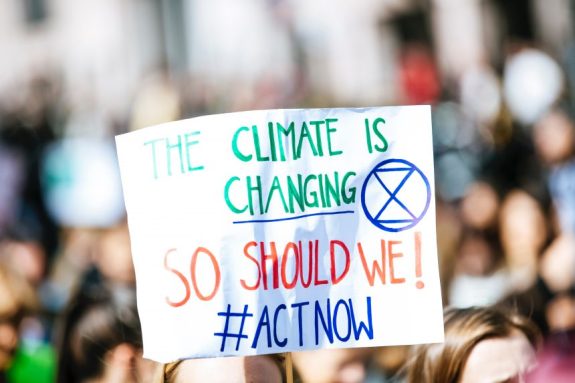










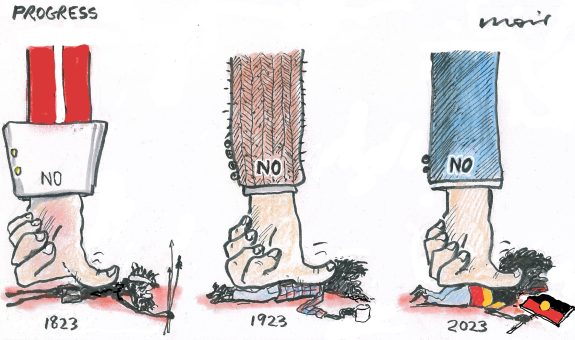
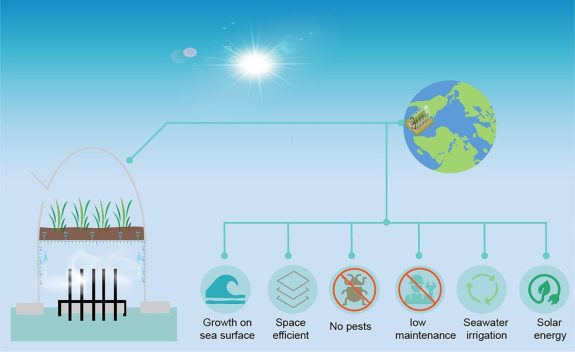
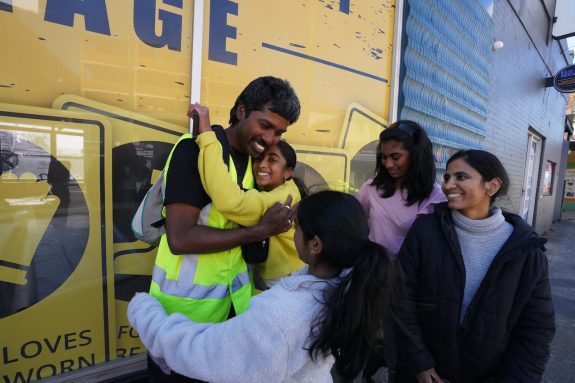
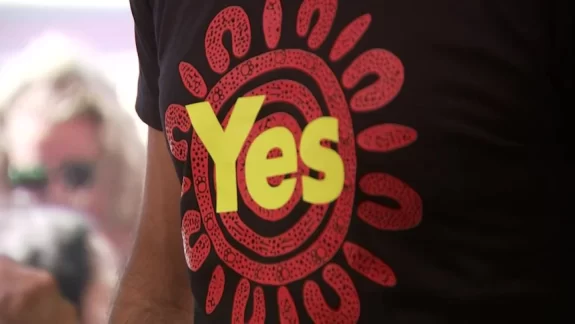
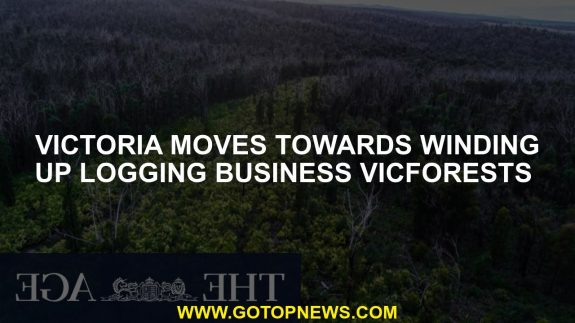


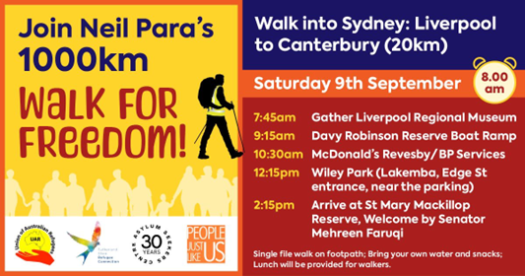

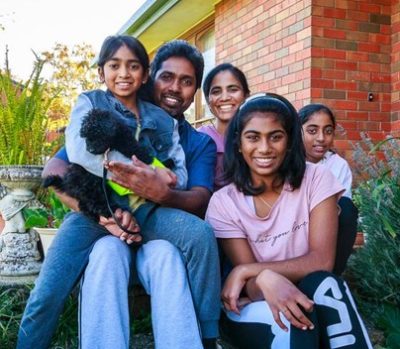

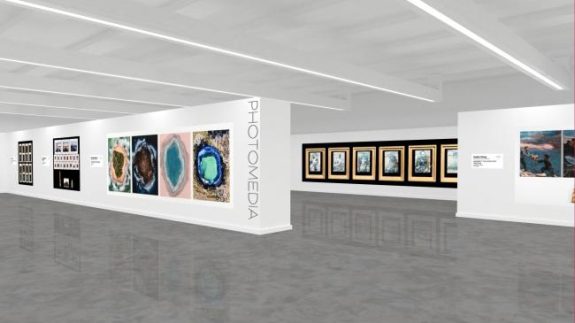


 Spectres of catastrophe have veered close to disrupting the sanguineness that should be the brief heritage of a younger generation, whose talents and intellects must grapple instead with processes of adjustment and adaptation and, for some most poignantly, the social isolation and estrangement inflicted by a killer pandemic. The tragedy for this generation and those immediately prior, is that the natural world is no longer capable of inspiring the awe and overwhelming urge to develop new means to capture it that gave rise to the almost pantheistic plein air art of the English Romantics, French Impressionists, and so on. The landscape genre is being replaced by a distal, digital reportage symptomatic of adaptive fatigue. Yet here, as if driven by fortuitous unity of purpose, the gamut of traditional and modernist forms seem to have been chosen for their communicative and expressive immediacy. These works at least – if one can generalise across their individualism – are finely crafted attempts to transform thoughts and feelings into unflinching accounts of where they precipitously find themselves and how they feel about it.
Spectres of catastrophe have veered close to disrupting the sanguineness that should be the brief heritage of a younger generation, whose talents and intellects must grapple instead with processes of adjustment and adaptation and, for some most poignantly, the social isolation and estrangement inflicted by a killer pandemic. The tragedy for this generation and those immediately prior, is that the natural world is no longer capable of inspiring the awe and overwhelming urge to develop new means to capture it that gave rise to the almost pantheistic plein air art of the English Romantics, French Impressionists, and so on. The landscape genre is being replaced by a distal, digital reportage symptomatic of adaptive fatigue. Yet here, as if driven by fortuitous unity of purpose, the gamut of traditional and modernist forms seem to have been chosen for their communicative and expressive immediacy. These works at least – if one can generalise across their individualism – are finely crafted attempts to transform thoughts and feelings into unflinching accounts of where they precipitously find themselves and how they feel about it.








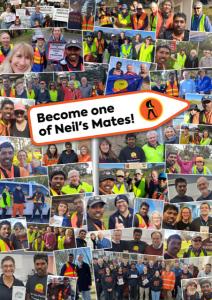 Musician Rose Turtle-Ertler from Tasmania who walked with Neil, welcomed Neil in a friend’s home and sang
Musician Rose Turtle-Ertler from Tasmania who walked with Neil, welcomed Neil in a friend’s home and sang